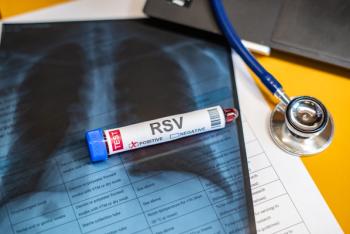
Opinion|Videos|October 24, 2024
Diagnosing IPF: Key Tests, Time to Diagnosis, and Importance of Early Detection
Author(s)Toby Maher, MD, PhD
Key Takeaways
- IPF diagnosis relies on clinical evaluation, HRCT, and occasionally lung biopsy to identify usual interstitial pneumonia patterns.
- The average time to IPF diagnosis can be delayed up to two years due to symptom overlap with other conditions.
Toby Maher, MD, PhD, discusses how idiopathic pulmonary fibrosis (IPF) is diagnosed through specific imaging and tests, with an average diagnosis time that can delay effective treatment, emphasizing that early diagnosis is crucial for reducing disease severity and expanding available treatment options.
Advertisement
Episodes in this series

Video content above is prompted by the following:
- How is IPF diagnosed, including specific tests and/or imaging, and what is the average time to diagnosis?
- What role does early diagnosis play in the severity of disease and the treatment options offered to patients with IPF?
Newsletter
Stay ahead of policy, cost, and value—subscribe to AJMC for expert insights at the intersection of clinical care and health economics.
Advertisement
Latest CME
Advertisement
Advertisement
Trending on AJMC
1
Bills to Address Expiring ACA Subsidies Fail to Pass Senate
2
Single-Dose Oral Antibiotic Zoliflodacin Treats Drug-Resistant Gonorrhea
3
T-DXd Regimens Show Better Tolerability, Manageable Safety in High-Risk, HER2-Positive Early Breast Cancer
4
Evaluation of Albumin Platelet Product for Fibrosis Detection in MASLD
5















































